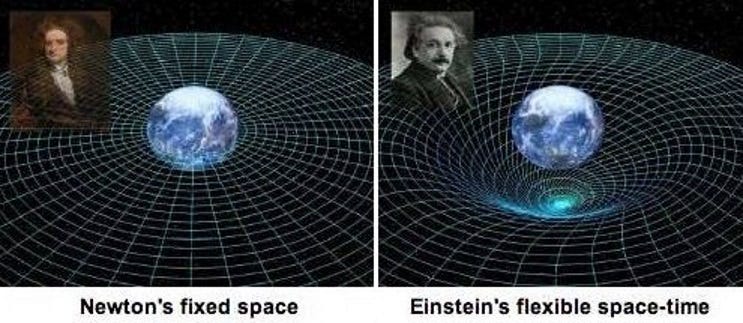I once dropped my phone and thought, “Why does it always fall?” That’s gravity! It’s the unseen force keeping us on Earth and making everything stay in place. Let’s explore!
What Is Gravity?
Gravity is a force we can’t see, but it pulls all things together, big or small. It keeps us grounded and directs the movement of planets in space. Without gravity, everything would float away.
In this article, we will discuss what gravity is.
Introduction to Gravity
What Is Gravity?
Let’s make it simple: gravity is a hidden force that attracts objects toward one another. Ever dropped your phone? That’s gravity in action. It’s what keeps our feet firmly planted on Earth and why planets orbit the Sun instead of flying off into space.
Define Gravity With Example
When you let go of a ball, it falls because Earth’s gravity pulls it toward the ground. This is why the ball falls instead of floating away. Gravity makes the Moon orbit Earth and keeps Earth moving smoothly around the Sun.
Gravity Formula:
The formula E = mc² is Einstein’s mass-energy equivalence formula.
Here’s what it means:
- E stands for energy (measured in joules).
- m stands for mass (measured in kilograms).
- c stands for the speed of light in a vacuum (approximately 3 × 10⁸ meters per second).
The formula tells us that mass and energy are two forms of the same thing a small amount of mass can be converted into a huge amount of energy because the speed of light squared (c²) is a very large number.
In simple words:
Even a tiny bit of mass can produce a massive amount of energy. This concept is behind things like nuclear energy and atomic bombs.
Why Is Gravity So Important?
Without gravity, we’d float away. It shapes the universe, forms galaxies, and even influences time. From Newton’s apple to astronauts floating above Earth, gravity is always working around us.
What Actually Is Gravity?
Gravity is a simple force in nature that draws objects toward each other. Anything with mass has gravity, and the more mass an object has, the stronger its gravitational pull.
This force is what keeps planets in orbit around stars, holds the Moon around Earth, and pulls things like rocks and people toward the ground.
Put simply, gravity is the unseen force that causes objects to fall, keeps us on the ground, and helps shape the universe.
What Else Does Gravity Do?
1. Shapes the Universe
Gravity shapes the universe. It’s pull brings together gas and dust, forming stars and planets. It also holds galaxies together even though they’re made of billions of stars flying through space!

2. Controls The Life Cycle Of Stars
Gravity plays a huge role in how stars are born and die. A star begins to form when gravity gathers huge clouds of gas into one place. Later in life, gravity can cause a star to collapse into a white dwarf, neutron star, or even a black hole.
3. Helps Satellites Stay in Orbit
Every satellite you use for GPS, weather updates, or internet signals is up there because of gravity. Satellites keep falling toward Earth, but they move forward so quickly that they keep circling instead of hitting the ground.
4. Affects Air And Water Flow
Gravity pulls air downward, which is why we have an atmosphere. It also moves water downward, creating rivers and waterfalls and guiding ocean currents.
5. Guides Time And Light
Einstein’s theory showed that gravity can bend light and even slow down time. Light travelling near a massive object (like a star or black hole) will curve. This is called gravitational lensing, and scientists use it to study faraway galaxies.
6. Influences on Animal Navigation
Some animals, like birds and sea turtles, use Earth’s gravitational field (along with magnetic fields) to help them navigate long distances during migration.
7. Impacts on Our Bodies in Space
In the absence of gravity, our muscles become weaker, bones lose their strength, and body fluids move abnormally. That’s why astronauts have to work out every day while in space!
Gravity in Our Universe

Gravity is the force of nature that makes planets orbit the Sun and keeps the Moon going around Earth. It causes ocean tides and helps form stars and planets. Gravity also pulls on light, as Einstein showed. Black holes have such powerful gravity that even light cannot break free from them.
The gravitational force is so immense that anything approaching too closely becomes trapped, unable to escape. Gravity holds everything in the universe together.
Gravity on Earth
Gravity holds us down to Earth and makes life possible by keeping everything in place. Gravity makes Earth move around the Sun and also keeps our air close so we can breathe. Gravity isn’t exactly equal in all locations; it can be a bit stronger or weaker depending on where you are on Earth.
NASA employs advanced spacecraft in the GRACE mission to monitor variations in Earth’s gravity over time.
The History of Gravity
Gravity in Ancient Times
Before scientists came up with solid theories, ancient civilisations had their own ideas. Some people once thought that objects fall because they naturally seek to return to their original position. Not very scientific, but hey, it was a start!
Newton’s Big Discovery
The Famous Apple Story
A chance encounter with a falling apple is said to have sparked Newton’s curiosity about gravity. While the story might be exaggerated, it’s true that Newton noticed how things fall and wondered why.
Newton’s Law of Universal Gravitation
Newton’s law says that all objects in the universe pull on each other due to gravity, no matter their size or distance. The strength of this attraction depends on mass and proximity:
More massive objects and shorter distances result in stronger gravitational pull. He even gave us a fancy formula to calculate it!

Einstein’s Game-Changing Theory
General Relativity Explained Simply
Enter Albert Einstein. He said gravity isn’t just a force; it’s a bend or warp in space and time caused by massive objects. A bowling ball on a trampoline shows how gravity bends space and pulls objects toward it. That’s Einstein’s idea of gravity.
Gravity as a Warp in Space-Time
So instead of just “pulling”, massive objects bend space-time itself. Planets move along these curves, which is why they orbit stars.
How Does Gravity Work?
The Invisible Force
Gravity is invisible, yet its effects are palpable; we can feel its pull. It doesn’t make a sound, and it doesn’t glow, but it’s working nonstop around you.
Mass and Distance: The Two Main Factors
More Mass, More Gravity
The Moon’s lower gravity allows astronauts to jump higher than on Earth. That’s because it has more mass. Bigger objects pull harder.
Closer Objects, Stronger Pull
The force of gravity strengthens as objects move closer together. The Sun’s gravity isn’t directly felt due to the vast distance between us.
Effects of Gravity
Gravity Keeps Us Grounded
You can jump, but you’ll come back down. That’s gravity doing its job. It also holds Earth’s atmosphere in place and keeps water in our oceans.
Tides and the Moon
The Moon’s gravity affects Earth’s oceans, creating tides. That gentle tug affects life in the sea and even our calendars.
Planets and Orbits
Gravity is what keeps planets circling the Sun in their nice, predictable paths. Without it, we’d be in serious trouble.
Benefits of Measuring Gravity
| Benefit | Explanation |
| Water Management | Helps track underground water and monitor droughts. |
| Natural Disaster Monitoring | Detects early signs of earthquakes, volcanoes, and landslides. |
| Oil, Gas, and Mineral Exploration | Locates resources hidden underground by measuring gravity changes. |
| Climate Change Studies | Monitors ice melt, sea level rise, and shifts in Earth’s mass. |
| Earth Structure Research | Reveals what’s under the surface, like mountains or empty spaces underground. |
| Planetary Science | Supports the investigation of gravitational forces on other planets and their moons. |
| Improved Satellite Navigation | Makes GPS and space travel more accurate. |
Gravity in Space
Zero Gravity Isn’t Zero
Astronauts appear weightless in space, yet gravity remains present. They’re falling, just like a roller coaster drop that never ends.
Black Holes and Extreme Gravity

What Happens In A Black Hole?
Black holes are extremely powerful objects in space. These objects possess such immense gravitational pull that not even light can escape. If you got too close, you’d be stretched like spaghetti, a process scientists call spaghettification.
Measuring Gravity
How Do Scientists Measure Gravity?
We use tools like gravimeters and satellites to find small changes in Earth’s gravity. This helps us understand earthquakes, volcanic activity, and even water levels.
Tools And Technologies
NASA uses satellites like GRACE (Gravity Recovery and Climate Experiment) to track how gravity changes over time due to ice melting or water moving underground.
Fun Facts and Mind-Blowers
Gravity on Different Planets
Gravity isn’t the same everywhere. On Mars, your weight would be under half its Earth value due to the planet’s lower gravity. On Jupiter, you’d feel twice as heavy!
Gravity and Time
This is where it gets fascinating: gravity can influence time. Time passes slower in stronger gravitational fields. Technically, time passes a little slower at sea level compared to on a mountain because gravity is stronger at lower altitudes.
DOE Office of Science: Contributions to Gravity Research
The U.S. Department of Energy (DOE) Office of Science helps scientists explore big questions about gravity. It supports advanced physics research to better understand how gravity works, especially in space and at very small levels.
The DOE also funds powerful tools like particle accelerators and supercomputers, helping scientists study gravity, black holes, and the early universe.
How Is Gravity Measured From Space?
Gravity is measured from space using special satellites. Satellites orbiting Earth can measure subtle shifts in gravity. The GRACE mission monitored Earth’s gravity to study climate-related changes.
Here’s how it works:
1. Two Satellites Fly Together
GRACE used two satellites that flew one after the other in space. They measured how far apart they were.
2. Gravity Changes Distance
When the front satellite flew over an area with more mass (stronger gravity), it sped up a The second satellite trailed the first and made small adjustments to its speed. Minor variations in distance revealed nuanced fluctuations in Earth’s gravity.
3. Data Is Sent To Earth
Scientists on Earth used this data to make detailed maps of gravity. These maps show how mass moves, like melting glaciers, rising seas, or underground water.
Google Gravity

Google Gravity is a fun feature where the Google page appears to break, and all its parts, like the logo and search bar, fall down as if affected by gravity. You experience Google’s playful take on gravity by searching “Google Gravity” or visiting the dedicated page. Reloading the page will reset the effect.
FAQs
1. Does Gravity Run Out?
No, gravity doesn’t run out. It’s a constant force that acts on objects with mass, and it will continue as long as there are objects with mass, like planets and stars.
2. What Is The Gravity On This Planet?
Earth’s gravity is about 9.8 metres per second squared (9.8 m/s²), which is the force that pulls objects towards the ground.
3. What Is Gravity In a Short Answer?
Gravity is a force that pulls objects toward each other, especially things with mass, like Earth pulling us down.
4. What Exactly Causes Gravity?
Gravity is caused by mass. The more mass an object has, the stronger its gravitational pull. Larger objects, like Earth or the Sun, have stronger gravity.
5. What Is Gravity Made Of?
Gravity is not made of anything physical, but it is the result of mass bending space-time, as described by Einstein’s theory. Some scientists believe gravity may be related to particles called gravitons, though they haven’t been discovered yet.
6. What Is The Best Definition Of Gravity?
Gravity is a natural force that pulls objects toward each other, especially those with mass, like how Earth pulls us toward the ground.
7. What Is Gravity In Physics?
In physics, gravity is the force of attraction between any two objects with mass. It’s responsible for the movement of planets, moons, and other celestial bodies.
8. What Is Gravity Made Of?
Gravity is not made of physical matter, but it is a force that arises due to mass and energy. It is often described as the bending of space-time by massive objects.
9. How Does Gravity Work?
Gravity works by pulling objects toward each other. The more mass an object has, the stronger its gravitational pull. This causes smaller objects to move toward larger objects.
10. What Is Gravity Measured in Physics?
Gravity is measured in Newtons (N), and the strength of gravity on Earth is about 9.8 metres per second squared (9.8 m/s²). This is the acceleration due to gravity.
11. Where Is Gravity The Weakest On Earth?
Gravity is weakest at the equator and at high altitudes, like the top of Mount Nevado Huascarán in Peru. This is due to Earth’s shape (slightly flattened at the poles) and rotation, which slightly reduces the pull of gravity at the equator.
12. Till We Understand How Gravity Works, But We Still Don’t Know Why It Works
Scientists know how gravity behaves; it pulls objects with mass together, and we can measure and predict its effects. But we still don’t fully understand why gravity exists or what causes it at the deepest level. It’s still one of physics’ biggest mysteries.
Conclusion
Gravity is one of those things we experience every day but rarely think about. From keeping our feet on the ground to bending the very fabric of space and time, it’s a force that shapes everything in the universe. Whether you’re watching a ball drop or gazing up at the stars, remember gravity is always working behind the scenes. Understanding it helps us understand the universe and our place in it.

